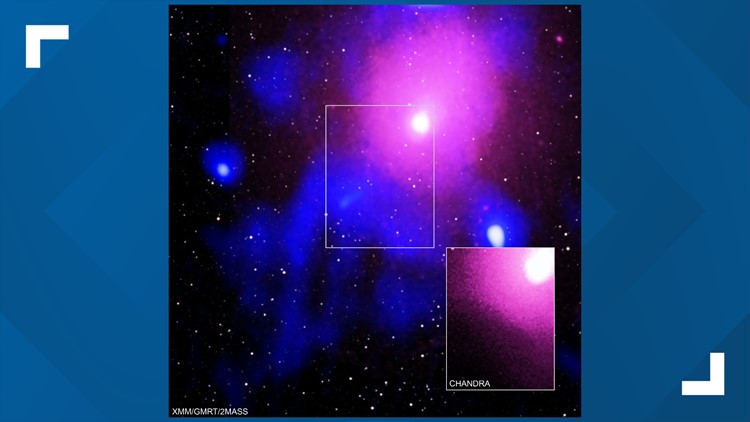CAPE CANAVERAL, Fla. — NASA claims astronomers have discovered the biggest explosion seen in the universe.
The explosion was so large it carved out a crater in the hot gas that could hold 15 Milky Ways. That's five times greater than the previous record-holder.
Scientists reported Thursday that the blast likely came from a black hole in the Ophiuchus cluster, made up of thousands of galaxies, about 390 million light years from Earth. Black holes are famous for pulling in matter, but they also blast out jets of material and energy.
Astronomers used NASA's Chandra X-Ray Observatory to make the latest discovery, along with a European space observatory and ground telescopes. Radio data was also used from labs in Australia and India.
"Having the combined information from X-ray and radio telescopes has revealed this extraordinary source, but more data will be needed to answer the many remaining questions this object poses," saif Melanie Johnston-Hollitt, a co-author from International Centre for Radio Astronomy in Australia.
The first hint of the giant explosion came in 2016. Researchers believe the explosion is complete since there hasn't been any new evidence of jets shooting from the black hole.
A paper discussing the findings was published in the Feb 27 issue of The Astrophysical Journal. The lead author of the study, Simona Giacintucci of the Naval Research Laboratory in Washington, DC, compared the eruption to Mt. St. Helens eruption in 1980. The biggest difference would be the size of the explosion.



